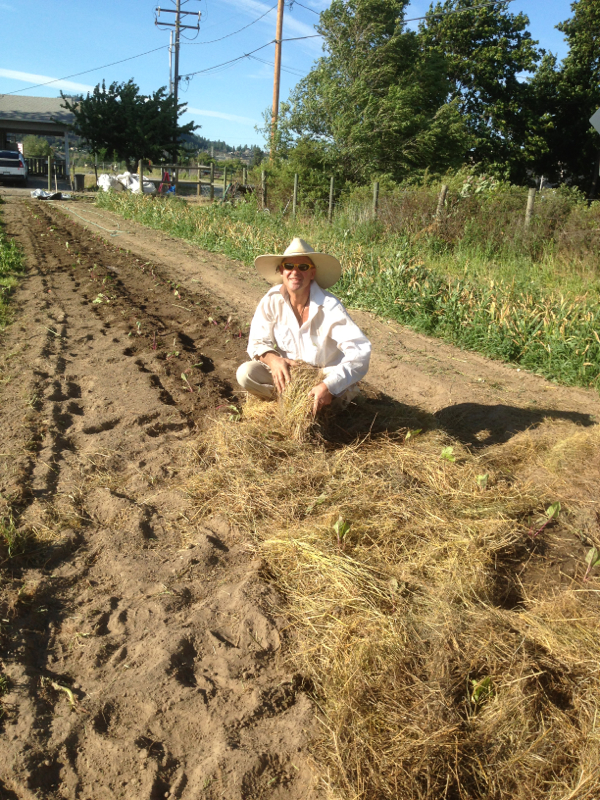Daniel's short version:
Poopy Bum is from the plant itself not bringing calcium to the fruit. The plant may be getting a crazy ass amount of growth and not enough water, or weird weather phases. Just knock them off the plant like a retarded brother off his bike.
The Long Version (I stole from someone~~~~kudos to them anyways....)
Blossom-end rot is a disorder of tomato, squash, pepper, and all other fruiting vegetables. You notice that a dry sunken decay has developed on the blossom end (opposite the stem) of many fruit, especially the first fruit of the season. This is not a pest, parasite or disease process but is a physiological problem caused by a low level of calcium in the fruit itself.
Symptoms
BER, or blossom-end rot usually begins as a small "water-soaked looking" area at the blossom end of the fruit while still green. As the lesion develops, it enlarges, becomes sunken and turns tan to dark brown to black and leathery. In severe cases, it may completely cover the lower half of the fruit, becoming flat or concave, often resulting in complete destruction of the infected fruit.
Cause
Calcium is required in relatively large concentrations for normal cell growth. When a rapidly growing fruit is deprived of calcium, the tissues break down, leaving the characteristic lesion at the blossom end. Blossom-end rot develops when the fruit's demand for calcium exceeds the supply in the soil. This may result from low calcium levels in the soil, drought stress, excessive soil moisture, and/or fluctuations due to rain or overwatering . These conditions reduce the uptake and movement of calcium into the plant, or rapid, vegetative growth due to excessive nitrogen fertilization.
Management
Adequate preparation of the garden bed prior to planting is the key to preventing BER. Insure adequately draining soil in the bed by adding needed ammendments, maintain the soil pH around 6.5 - a pH out of this range limits the uptake of calcium. Lime (unless the soil is already alkaline), composted manures or bone meal will supply calcium but take time to work so must be applied prior to planting. Excess ammonial types of nitrogen in the soil can reduce calcium uptake as can a depleted level of phosphorus. After planting, avoid deep cultivation that can damage the plant roots, use mulch to help stabilize soil moisture levels and help avoid drought stress, avoid overwatering as plants generally need about one inch of moisture per week from rain or irrigation for proper growth and development.
Once the problem develops, quick fixes are difficult. Stabilize the moisture level as much as possible, but prevention is the key. Some recommend removing affected fruit from to reduce stress in the plant.
Rapid early growth accentuates the problem because it tends to increase the calcium requirement per unit of time.
Although a sudden lack of water is the principal cause of blossom end rot, excessive soil moistures early in the season may smother the root hairs and cause blossom end rot to occur during sudden hot weather. It may be more serious on the windward that on the leeward side of a field and more common on staked tomatoes than on bush types. Generally, blossom end rot is most common on the first fruits to turn red.
Management:
Since blossom end rot is so closely related to adequacy of water supply, an important control is to regulate the moisture supply in the soil. The land should allow good drainage during a wet period. If drought occurs, cultivation should be very shallow to reduce water loss and irrigation should be used. Hoeing or cultivating should be performed no closer than one foot from the plants to reduce root pruning.
In the greenhouse, transplants should not be grown too quickly nor should the plants be too old and subjected to severe hardening before transplanting. A steady growth rate as a seedling and as a field plant will discourage much of this problem.
If irrigation of any kind is available, it should be using during periods of hot, drying winds. Start to irrigate at the beginning of the dry spell. Mulching, which serves to maintain an even level of soil moisture, should be practiced where feasible. Mulch with black plastic or grass clippings to reduce moisture loss and to control weeds. Tomatoes and peppers planted unusually early, while the soil is still cold, are likely to have the first fruits affected by blossom end rot. Consequently, a delay in planting until soil







 RSS Feed
RSS Feed